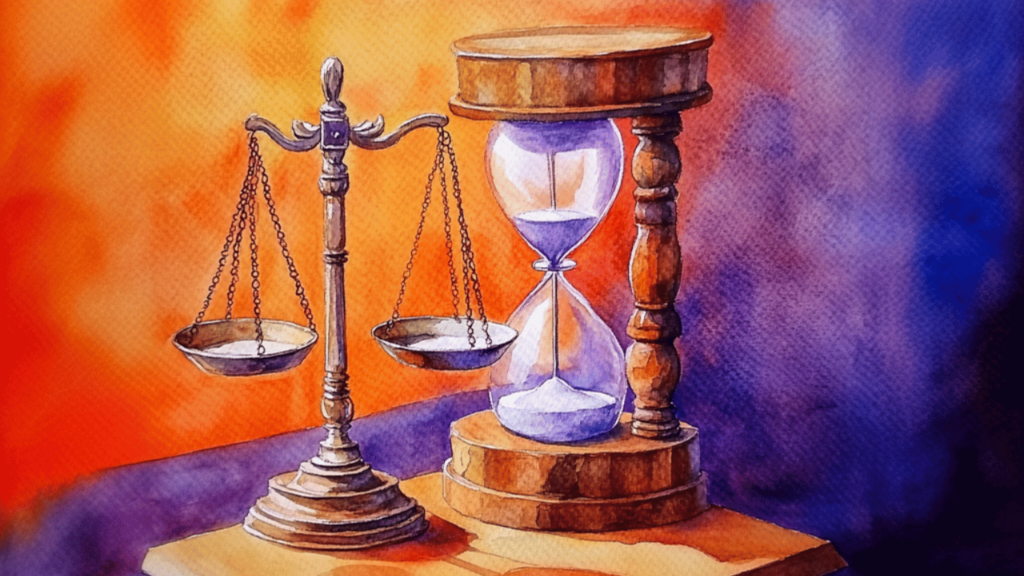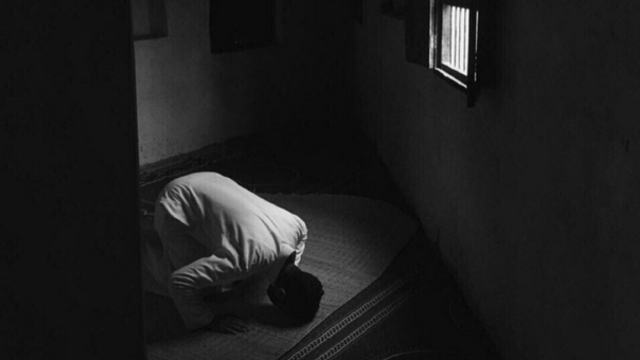Definition
Statute of limitations refers to the period beyond which a legal action, civil or criminal, is no longer admissible. It can apply to real or personal rights, movable or immovable property.
The statute of limitations is a principle with constitutional value whose rules fall within the legislative competence (art. 34 Constitution; Constitutional Council No. 2019-785 QPC, May 24, 2019, Mr. Mario S.).
The statute of limitations is justified by numerous reasons, including:
- The proportionality between the gravity of the facts and the duration of prosecution;
- The deterioration of evidence increasing the risk of miscarriage of justice;
- Penalizing the inertia of justice and reinforcing the right to be tried within a reasonable time;
- Regulating the number of cases to be processed.
The statute of limitations for public action means that the period during which the perpetrator of a criminal offense can be prosecuted has elapsed. This limitation depends on the type of offenses (contravention, misdemeanor, crime), the existence or not of a victim, and their age at the time of the facts. It is a matter of public policy and can be invoked at any time during the trial.
The statute of limitations for punishment concerns the period after which it is no longer possible to execute a conviction. This means that a conviction decision has already been rendered against a person, and the execution of this sentence must be carried out within the allotted time. However, due to this limitation, it is possible that the person concerned may not have to serve the sentence pronounced against them. For example, if a person is sentenced to pay a fine for a contravention, the limitation period for a contravention being 3 years, if this person does not pay the fine and does not receive a reminder, they will no longer need to comply once the limitation period has elapsed. The criminal conviction recorded in the criminal record is not erased, however. The Code of Criminal Procedure provides for the automatic erasure of certain mentions after a certain period (Article 775 of the Code of Criminal Procedure).
While generally, the conviction is only erased from the criminal record after a period of 40 years from the last conviction or upon the death of the person concerned, it can in some cases be erased for specific reasons or after a determined period. Examples: the conviction is erased in case of amnesty or judicial rehabilitation; or the conviction is erased within 3 years for convictions for police contraventions or for educational measures or sanctions pronounced against minors.
Limitation Periods
The limitation period varies according to the nature of the offense. This period applies to the victim who wishes to file a complaint and to the public prosecutor who wants to initiate proceedings. As a general rule, it is:
- One (1) year for contraventions (art. 9 of the Code of Criminal Procedure);
- Six (6) years for misdemeanors (art. 8 of the Code of Criminal Procedure) which are offenses punishable by a fine and/or imprisonment of less than 10 years (example: assault and battery).
Exceptions:
- Certain offenses committed against minors for which the limitation period is ten (10) years, such as procuring with respect to a minor or corruption of a minor.
- Certain offenses committed against minors for which the limitation period is twenty (20) years such as serious violence against a minor under 15 years of age or sexual assault on a minor under 15 years of age. Rapes (considered as crimes) are excluded, which are defined in art. 222-23 of the Penal Code as “Any act of sexual penetration, of whatever nature, or any act of oral-genital contact committed on the person of another or on the person of the perpetrator by violence, coercion, threat or surprise”.
- Certain offenses (art. 706-167, 706-16 and 706-26 of the Code of Criminal Procedure) such as offenses related to the proliferation of weapons of mass destruction punishable by ten (10) years of imprisonment, drug trafficking offenses, war crimes, for which the limitation period is twenty (20) years from the day the offense was committed.
- Twenty (20) years for crimes (art. 7 of the Code of Criminal Procedure) which correspond to the most serious offenses, such as voluntary homicide or rape.
Exceptions:
- Terrorist acts defined in articles 420-1 to 421-6 of the Criminal Code, drug trafficking as well as criminal conspiracy provided for in articles 222-34 to 222-40 of the Criminal Code, offenses related to chemical and nuclear weapons, eugenics and reproductive cloning, war crimes, for which the statute of limitations is thirty (30) years.
- Certain crimes committed against minors (assassination, murder, torture and acts of barbarity, rape), for which the statute of limitations is thirty (30) years from the minor victim’s age of majority.
Special cases
For certain specific offenses, these time limits may be reduced or extended.
- For example, the statute of limitations for non-discriminatory insult or defamation is three (3) months from the publication or utterance of the statements. The time limit is one (1) year for insult or defamation based on ethnicity, nation, alleged race, specific religion, or due to sex, sexual orientation, gender identity or disability.
- The statute of limitations is six (6) months for certain electoral offenses, starting from the day of the proclamation of the election result (art. L. 114 of the Electoral Code).
- Crimes against humanity (mentioned in art. 212-1 of the Criminal Code) are imprescriptible.
- Law No. 2021-478 of April 21, 2021, aimed at protecting minors from sexual crimes and offenses and incest, creates a principle of “sliding prescription“: the statute of limitations for rape, sexual assault or sexual abuse on a minor can be extended if the same perpetrator rapes or sexually assaults another minor until the date of prescription of this new offense. This means that the statute of limitations for these offenses (sexual assaults and abuses) can exceed twenty (20) years and that the statute of limitations for this type of crime (rape) can exceed thirty (30) years.
The prescription of the sentence
The prescription periods for the sentence are set out in articles 133-2 and following of the Criminal Code. Generally, the duration of the prescription of the sentence is:
- Three (3) years for a misdemeanor;
- Six (6) years for an offense. By derogation, some offenses are prescribed after 20 years once the decision has become final.
- Twenty (20) years for crimes from the date on which the conviction decision became final. However, by derogation, some crimes are prescribed after 30 years and others, like crimes against humanity, are imprescriptible.
Starting point of the limitation period
- Instantaneous offenses, i.e., committed at once (a theft for example): the starting point of the limitation period is the day the offense is committed.
- Habitual offenses, i.e., committed repeatedly over a more or less long period (example: harassment or illegal practice of a profession). The starting point of the limitation period is the date on which the offense is discovered.
- Continuous offenses, i.e., those whose effects last over time (example: receiving stolen goods, illegal possession of a weapon). The starting point of the period is the last day on which the offense is committed.
- Concealed or hidden offenses, i.e., those that cannot be known by either the victim or the judicial authority on the day of the commission of the acts (art. 9-1 of the Code of Criminal Procedure) such as breach of trust, or those for which the perpetrator deliberately carries out any maneuver tending to prevent its discovery, such as tax fraud. The starting point of the limitation period is the day the offense appears and can be observed. However, a maximum threshold for the limitation period is provided, of twelve (12) years for an offense and thirty (30) years for a crime, from the day the offense was committed.
- Complex offenses, i.e., consisting of a series of acts that allow for the commission of a single offense, such as fraud which consists of fraudulent maneuvers resulting in a transfer of funds. The limitation period then only starts from the day of the last act, which in the case of fraud is the day of the last transfer.
Interruption and Suspension of the Statute of Limitations
The statute of limitations can be modified by an act or event that stops its count. It can be interrupted or suspended.
Interruption
In the case of an interruptive act (Article 9-2 of the Criminal Procedure Code), a new period equal to the initial period begins anew. The new starting point is the date of the legal act that caused its interruption. The statute of limitations for an offense is interrupted by the following legal acts:
1. Acts of the Public Prosecutor or the civil party, aimed at initiating public action
- Any requisition by the public prosecutor is an act of prosecution that interrupts the statute of limitations (Court of Cassation, crim. April 27, 2004, No. 03-85.328).
- The constitution of a civil party by way of intervention interrupts the statute of limitations, as it is an act of prosecution (Court of Cassation crim. Oct. 1, 2003, No. 03-83.582).
- A simple complaint, “not accompanied by a civil party constitution, is not an act of investigation or prosecution even in matters (…) where the administration’s complaint is the prior and necessary condition for initiating public action” (Court of Cassation, crim. May 10, 1972, No. 71-90.995).
2. Acts of investigation
Reports drawn up by judicial police officers in preliminary investigations interrupt the statute of limitations (Court of Cassation crim. March 23, 1994, No. 93-83.719).
3. Acts of instruction
- Any act of instruction carried out by an investigating judge, an investigating chamber, or magistrates and judicial police officers, aimed at prosecuting the perpetrators of an offense, interrupts the statute of limitations.
The consultation of the national driving license file (Court of Cassation crim. Oct. 28, 2014 No. 13-86.413) constitutes, for example, an act of instruction or prosecution that interrupts the statute of limitations. - Any order issued by the investigating judge (Court of Cassation crim. Feb. 10, 2004, No. 03-87.283) interrupts the statute of limitations. This is the case for an order to refer the matter to the public prosecutor for requisitions on public action, the issuance of a rogatory commission, or the notice of end of investigation delivered to the parties.
4. Court decisions
Any judgment or ruling, not marred by nullity, even if not final, interrupts the statute of limitations.
Opposition to a default judgment interrupts the statute of limitations of the sentence and constitutes the starting point of a new statute of limitations for public action (Court of Cassation crim. May 20, 2003, No. 02-85.403)
Suspension
The statute of limitations can be suspended by events that make prosecution impossible. The period is stopped during the cause of suspension but resumes where it left off. There are two types of causes for suspension:
- Legal causes: they are provided for by law. This may include, for example, the implementation of an alternative measure to prosecution.
- Non-legal causes: they are not provided for by law, are very rare, and are examined on a case-by-case basis by the judge.
APPLICABLE REFERENCES
Art. 7 of the Criminal Procedure Code (CPC) (statute of limitations for crimes); art. 8 of the CPC (statute of limitations for misdemeanors); art. 9 of the CPC (statute of limitations for contraventions); art. 9-1 of the CPC (statute of limitations for hidden or concealed offenses); article 9-2 of the CPC (interruption of the statute of limitations); art. 9-3 of the CPC (suspension of the statute of limitations); art. 706-47 of the CPC (extended deadlines for minor victims);
Articles 65 and 65-3 of the Criminal Code (statute of limitations for insult and defamation offenses; art. 213-5 of the Criminal Code (statute of limitations for crimes against humanity); Law of July 29, 1881 on the freedom of the press; Law No. 2018-703 of August 3, 2018 strengthening the fight against sexual and gender-based violence; Law No. 2021-478 of April 21, 2021 aimed at protecting minors from sexual crimes and offenses and incest.




